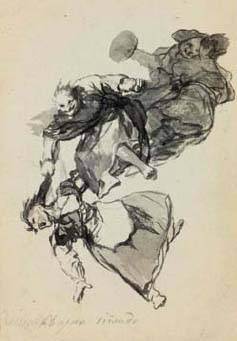Some works acquired by the LACMA

Rapanui Male Ancestor
Figure (moai kavakava)
(detail), Easter Island
circa 1800

Solomon Ceremonial
Shield (detail),
Soloman Islands, Santa
Isabel Island, circa
1800
LACMA ANNOUNCES ACQUISITION OF LANDMARK OCEANIC COLLECTION
New Works Highlight Initiative to Collect and Exhibit Art from Underrepresented Regions
Source: LACMA
]]>
July 15th 2008 – The Los Angeles County Museum of Art (LACMA) announced the acquisition of one of the most significant private collections of Oceanic art assembled in the twentieth century. Representative of the wide range of arts from the Pacific regions and with historic provenance, the collection’s greatest strengths lie in the areas of Polynesia and Melanesia, and includes objects from Micronesia and Australia. Among the key works: a superb eighteenth-century Hawaiian drum collected by Captain James Cook in 1778, an Easter Islands dance paddle, and a hermaphrodite ancestor figure. The acquisition substantially broadens LACMA’s permanent collection and also underscores the museum’s commitment to collecting and exhibiting works of art from underrepresented areas of the world.
“In our efforts to become a truly world museum with a Los Angeles point of view, acquiring art of the Pacific islands is essential—and this acquisition is a landmark event,” said LACMA CEO and Wallis Annenberg Director Michael Govan. “Previously, LACMA owned only a handful of Oceanic objects, but with this strategic initiative we now boast one of the finest such collections in the nation.”
Purchase of the forty-six rare and historic masterworks from the Pacific Islands—on view for the first time in Los Angeles in February 2009—was made possible with a generous $5 million challenge grant from The Eli and Edythe Broad Foundation. LACMA trustees Jane and Terry Semel, David Bohnett, Camilla Chandler Frost, and Gayle and Ed Roski funded the balance of the acquisition. “Edye and I are delighted to join other trustees in ensuring the artwork of the Pacific regions will be displayed in the context of the other outstanding collections that make up LACMA,” said Eli Broad. “We are thrilled that the trustees accepted our challenge and have devoted resources to this transformative purchase.” The Broads have contributed more than $65 million to LACMA over the past three years; with this contribution, they have now given or purchased more than fifty works for the museum.
In addition to objects collected by Captain Cook, two works from Rapanui (Easter Island) are among the most intriguing in the collection—a moai kavakava (male ancestor figure) and rapa (dance paddle), both carved around 1800. The ancestor figure was collected in situ by Lieutenant Roberts Sayers, HMS Thetis, in 1830. A striking New Ireland uli (hermaphrodite ancestor figure) was one of two acquired by the Linden Museum, Stuttgart, in 1906. An extremely rare mid-nineteenth century wicker shield with inlay of shell and parinarium nut paste from Santa Isabel in the Solomon Islands depicts human forms and is the most important of its type.
The newly added works, identified for LACMA by Sotheby’s, were purchased from the Masco Corporation Foundation. Masco Corporation Foundation provides funding for its charitable activities which include primarily low income housing and arts and cultural activities in Southeast Michigan. The entire collection was displayed at The Kimbell Museum of Art, the Honolulu Academy of Arts, The Detroit Institute of Arts, and the North Carolina Museum of Art during the mid-90s in a touring exhibition, Island Ancestors, Oceanic Art from the Masco Collection.
Follow us on:


